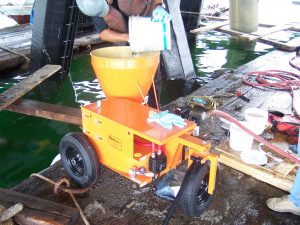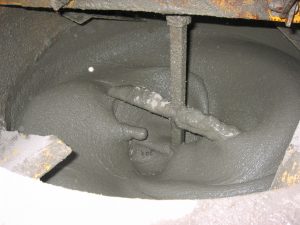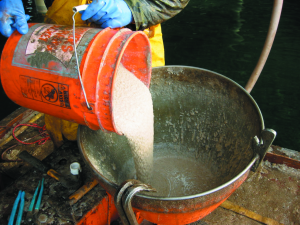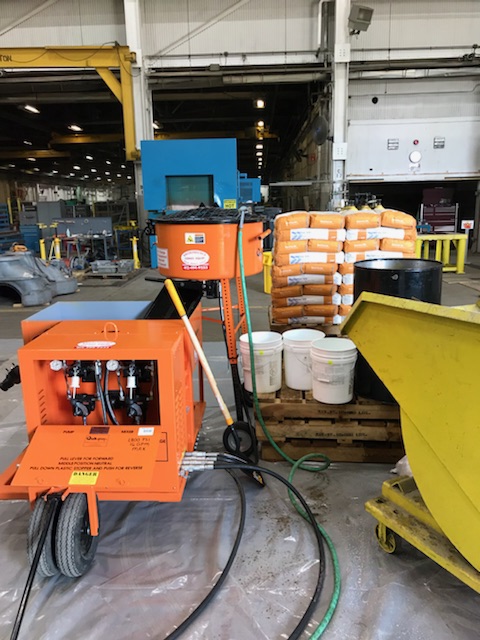Whether you’re filling cracks in a foundation or connecting pre-cast concrete sections, the grout you use plays a pivotal role in the success of your project. And that grout starts with mixing.
Grout is finicky. It requires the right mixing technique and the right amount of ingredients to create the bonding properties you need it to have. The common myths below are ones that are important to address with your team before gearing up for your project.
Quikspray®, Inc. is a leader in the world of grout, and we know what it takes to get the job done right. For large jobs, our grout pumps and grout mixers are must-haves. We have different models for your unique tasks that can vary in speed, create a dustless mixing process, and more. Contact us today to learn more about our products and find the right one for you.
Top Common Myths About Mixing Grout
1. Old grout powder is still okay to use.
You might be tempted to use a bucket of grout powder that’s been sitting in the warehouse for months when you just need to mix a little more. But over time, powder that wasn’t sealed correctly could now have moisture in it that will affect how it mixes and bonds. Stick with new grout powder or powder that’s been re-sealed in a way to prevent moisture and other contaminants.
2. Additives are just extra expenses.
Not all applications require grout additives, like those that prevent mildew or enhance the grout’s color, but some do benefit from an additive. Although they’ll cost more money, the investment is worth it to get a high-end outcome for projects that require additives.
3. You only need the exact amount you plan to use.
Having extra grout on hand beyond the exact amount you think you’ll need for a project is a must. Depending on weather and temperature conditions, grout can mix and set a bit differently in one application than another, making it possible that you’ll need more than you intended.
Plus, mistakes can always happen during mixing. It’s always a good idea to have more grout powder than what you deem necessary, just to make sure you’re covered.
4. Water and grout temperature aren’t important.
A cementitious grout’s instructions specify the ideal temperature of the grout and water you should use to mix it with. In most cases, cool to warm water and grout are best. These temperatures will allow the mixture to be workable for a while without setting too quickly.

5. The type of water isn’t important either.
Always use clean water to mix your cementitious grout for the best results. Try to avoid water that has contaminants, looks or smells dirty, or has a high amount of minerals, all of which may affect the functionality of the final mixture.
6. If you’ve done it once, you know how to do it again.
Not all grout is the same, so it’s vital that you read the instructions of the grout you use to ensure a proper mix. This is especially true if you’re mixing a type of grout that you’re not used to working with, as epoxy and cementitious grouts mix much differently.
7. High speed mixing is better.
Mixing grout at high speeds introduces heat to the mixture, effectively changing its composition. The idea is to maintain the temperature of the grout and water as indicated in your grout’s instructions, so stick with a low-speed mixing drill or grout knife to mix.

8. It doesn’t matter how you mix.
If you do use a drill to mix your grout, avoid moving it around or up and down. Extra movements can bring air bubbles into your mixture, affecting its ability to bond and cure correctly. Again, the instructions should give some pointers of the best way to mix your specific solution.
9. Adding more water for consistency is fine.
Never add more water than what the directions indicate to mix your grout. It might be tempting to add a bit more to make it easier to mix or prevent it from curing too fast, but extra water interferes with a grout’s chemical composition. Too much water may render it useless.

10. You can mix full bags of grout at one time.
It’s a good idea to mix small amounts of grout at a time, especially if you’re not going to be able to use a full bag before it begins to cure. Mix only what you need for each stage of the project.

11. You can use the mixture right away.
Slaking is the process of allowing grout to rest so that the water you mixed into it can fully permeate the powder. This is a necessary step you won’t want to skip to ensure that your grout reaches the right chemical composition and consistency. Allow your grout to slake for about five minutes before using it.


